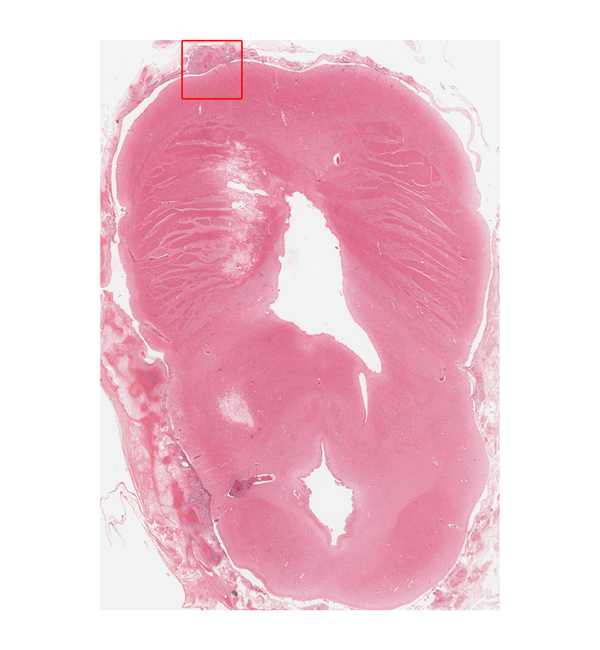Purulent meningitis
■Cerebrum
AIDS leukoencephalopathy
■Cerebrum
Tuberculous meningitis
■Pons
Cytomegalovirus encephalitis
■Cerebrum
Progressive multifocal leukoencephalopathy
■Cerebrum
Subacute sclerosing panencephalitis
■Cerebrum
Rabies
■Hippocampus
Congenital cytomegalovirus encephalitis
■Cerebrum
Herpes simplex encephalitis
■Temporal lobe
Acute poliomyelitis
■Spinal cord
Suppurative ventriculitis
■Cerebrum
Cryptococcosis
■Thalamus
Tuberculous meningitis/Pons
This condition is meningitis caused by Mycobacterium tuberculosis. Its lesion sites and characteristics slightly differ to those of purulent meningitis. The main lesion site is at the base of the brain near the brain stem. Inflammation caused by M. tuberculosis tends to form granulomatous lesions, which are called tuberculoma. The inside of the tuberculoma appears cheese-like, which is known as caseous necrosis, while, in the surrounding area, there is epithelioid cell infiltration. A definitive diagnosis is reached if M. tuberculosis is identified with acid-fast bacilli staining methods, such as Ziehl-Neelsen staining. In tuberculous meningitis, vascular endothelial cells thicken due to inflammatory changes, which can cause circulation disorders. As lesions commonly occur at the base of the brain, ventricular system flow can be blocked, which can cause hydrocephalus, leading to serious sequelae.
-
 The mid brain is destroyed with calcification
The mid brain is destroyed with calcification
-
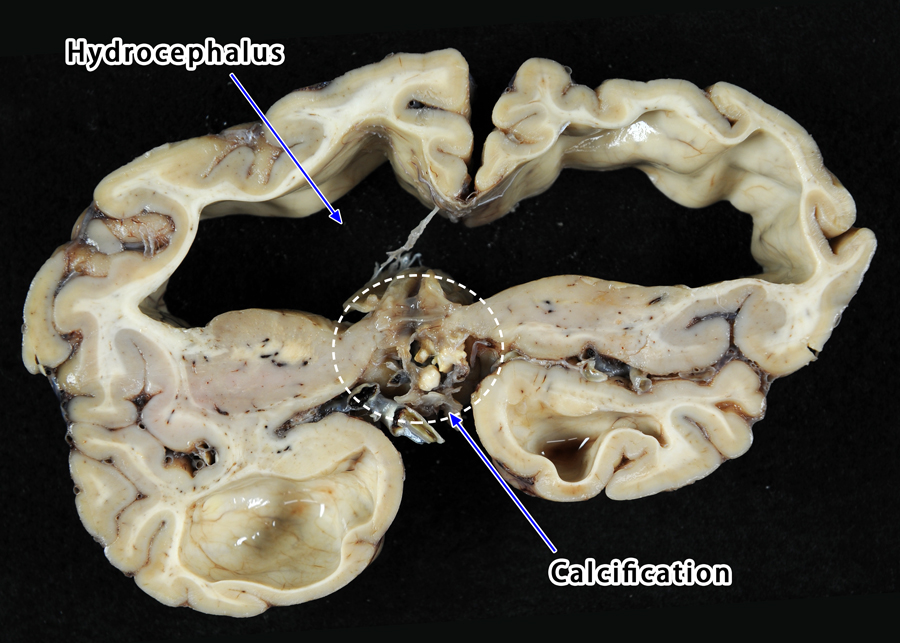 The lateral ventricle is very enlarged. The brain base
The lateral ventricle is very enlarged. The brain base
-
 The mid brain is destroyed with calcification. The pons is partically destroyed
The mid brain is destroyed with calcification. The pons is partically destroyed
-
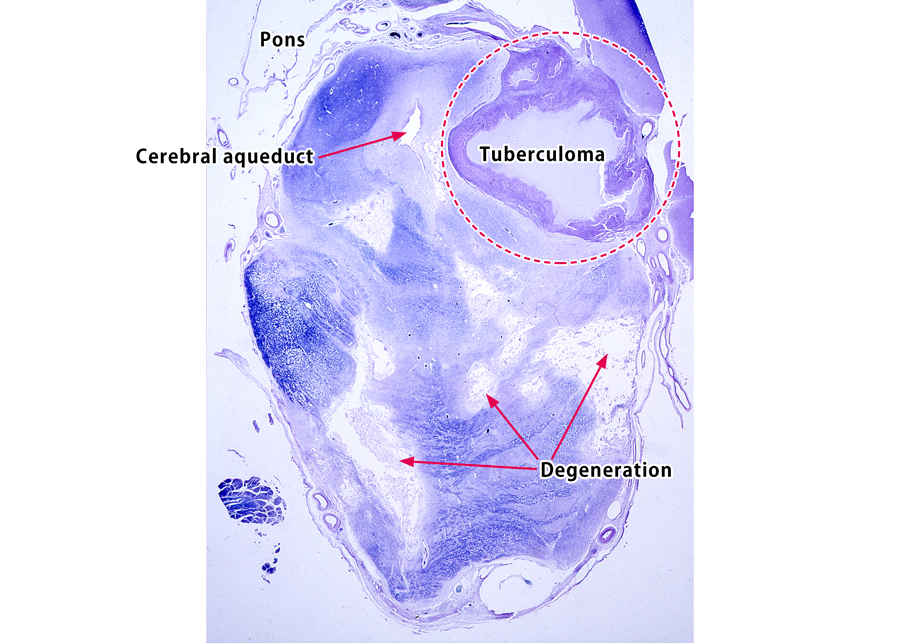 The tuberculoma is formed in the tegmentum of the pons. Along with that, the surroundings are being compressed and degenerated. (KB stain)
The tuberculoma is formed in the tegmentum of the pons. Along with that, the surroundings are being compressed and degenerated. (KB stain)
-
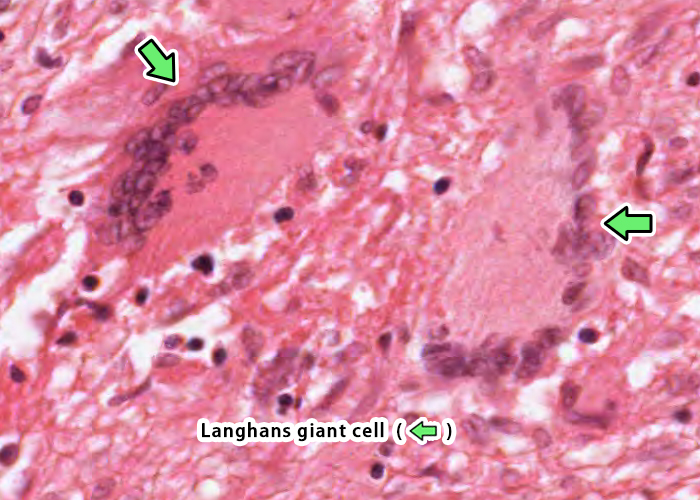 Many macrophages fuse into large cells. (HE stain)
Many macrophages fuse into large cells. (HE stain)
-
 Caseous necrosis is formed. (HE stain)
Caseous necrosis is formed. (HE stain)
-
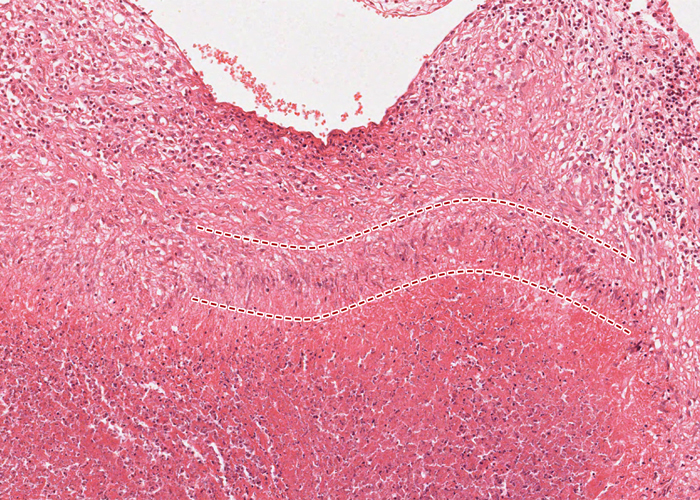 A shelf-like arrangement of epithelioid cells is observed (HE stain)
A shelf-like arrangement of epithelioid cells is observed (HE stain)
HE stain/Tuberculous meningitis Pons


